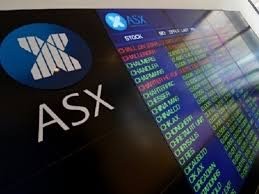Weekly market update
Written and accurate as at: Apr 03, 2018 Current Stats & Facts

We ended the week, month and quarter with a bout of equity market volatility, which saw the broader market down -2.5%, -3.7% and -3.8% respectively. In the US, the tech sector – which makes up ~25% of the S&P 500 – endured a particularly tough few days, dragging down the rest of the market. President Trump’s personal animosity towards Amazon is long-held and widely-known, suggesting that his Twitter assault should not be seen as a “bolt from the blue”. Nevertheless, in combination with the ongoing furore over Facebook’s use of data, further sabre-rattling over trade terms, lower liquidity over the Easter period, and already-fragile investor sentiment following February’s wobble, we saw the tech sector take a hit.
While the ASX does take a lead from the US market, the local market has a far lower exposure to the high P/E tech stocks which are the focus of current investor concern. We have also seen a pickup in corporate activity, including buy-backs, which further provide a measure of market support.
March saw a rotation away from resources towards defensives and bond-sensitives. Australian 10 year government bond yields have fallen to ~2.6% versus ~2.9% a month ago, driving outperformance in infrastructure (S&P/ASX Infrastucture -2.7%) and REITs (S&P/ASX 200 A-REIT +0.1%) – although the latter was due to strength in industrial REITs (eg. Goodman (GMG) (+2.7%)), with investors remaining wary of mall owners (eg. Westfield (WFD) (-2.7%), Scentre (SCG) (-0.3%)).
The consensus view that China has emerged from its winter hibernation with less strength than expected continues to weigh on resources, with the S&P/ASX 200 Resources down -4.3% for the month. Key commodity prices have pulled back from their recent highs with iron ore, for example, falling from ~US$78 to ~$US$66 a tonne over March. However we are mindful that it is very early to be drawing conclusions about Chinese demand given that the combination of the late Lunar New Year and a longer-than-expected National People’s Congress means that production has only really ramped up in the last week or two. We will continue to see how this unfolds, however at this point market sentiment around resources remains muted. BHP Billiton (BHP) fell -5.3% for the month, while Rio Tinto (RIO) was down -7.8% and Fortescue Metals (FMG) -12.2%. FMG’s decline was exacerbated by confirmation that the discount they receive for their iron ore – which is lower-grade than BHP’s or RIO’s – is wider than they first thought. Alumina (AWC) (+5.8%) was one of the few miners to buck the trend, benefiting from tighter alumina supply as the world’s largest smelter – the Alunorte plant in Brazil – remains on constrained production pending the result of an investigation into a potential minor breach of environmental standards.
Elsewhere, the regional banks were also among the worst performers, with Bendigo Bank (BEN) -10.4% and Bank of Queensland (BOQ) -13.2%, which is at least partly driven by the rise in funding costs as LIBOR spreads widen. Caltex Australia (CTX) (-9.1%) was also weak as investors digested its change in strategy and express concerns over pressure on earnings.
There was some rotation between the loved and unloved in March that saw some of 2017’s strong performers such as IAG (IAG) and Medibank Private (MPL) give up some of their gains, down -8.8% and -6.9% respectively. As speculation mounts over the next Australian Federal election, MPL may also continue to face a headwind from Labor’s position on private health care. On the flip-side, we saw a bounce back from recent underperformers including Graincorp (GNC) (+6.3), Dominos Pizza (DMP) (+5.9%), Brambles (BXB) (+5.6%), Healthscope (HSO) (+4.2%), and ALS (ALQ) (+3.1%). Wesfamers’s (WES) (+0.6%) decision to de-merge Coles has been well received and allowed it to hold up in an otherwise falling market, while a management trip from CYBG (CYB) (+1.1%) to the Australian investor base helped allay recent fears over a potential spike in the mis-selling claims.
Santos (STO) (+0.6% in March) announced an all-cash takeover offer from a US private equity firm at a 30% premium to its most recent price. The LNG market dynamics are changing as supranationals such as the World Bank have recently announced they are now unlikely to fund further development of upstream LNG projects, which will ultimately restrict available supply. At the same time they will continue to fund gas-fired power stations in developing nations. As a “transition” fuel between coal and renewables, demand for LNG remains well supported while less funding for upstream development should keep the market tight.
Nine Entertainment (NEC) (+1.7% in March) announced that it had won the television rights for Tennis Australia in a five year deal commencing in 2020. While sporting rights usually act as a loss-leader for television networks, the amount that NEC is likely to lose on the tennis is less than what they currently lose broadcasting cricket. Meanwhile, tennis offers greater certainty of content – given the amount of days often lost to rain in cricket – and the Australian Open is perfectly positioned leading into TV rating seasons. It will also allow them to be more selective in bidding for the more attractive parts of the rights available from Cricket Australia.










